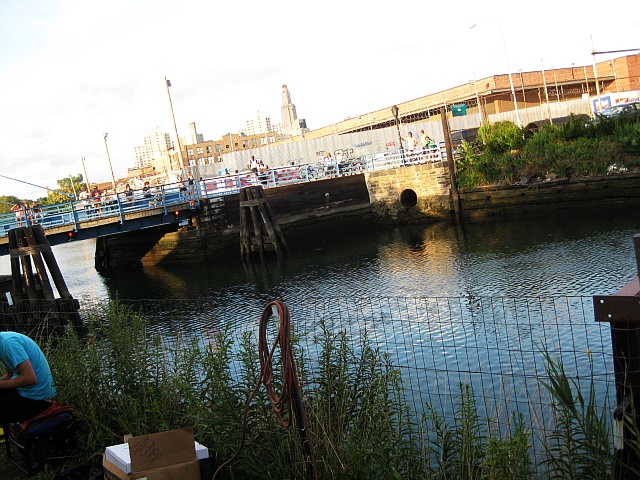John Petro
Building Housing on Old Industrial Land: The Gowanus Canal

The press coverage of New York City’s rezoning plan of an area near the Gowanus Canal in Brooklyn has mostly poked fun at its polluted and contaminated status. The Observer wittily called the canal “charming” and the blog Gowanus Lounge labeled it “romantic.”
An EPA document gives the following background on the canal:
The Gowanus Creek Canal, constructed in 1881 to accommodate industrial users and commercial shippers on the Brooklyn waterfront, extends approximately one mile north of the Hamilton Avenue Bridge. The Gowanus Watershed is a highly developed urban area located in the Borough of Brooklyn, City of New York. There are approximately 60 acres of open water along the canal. The historic uses in and around the Gowanus Canal have caused a significant deposition of hazardous materials on the canal bottom.The canal is impacted by poor water quality, contaminated sediments, such as heavy metals, PCBs, and PAHs, deteriorating bulkheads, a poor benthic community structure, extensive filling, little or no buffers, and odors, all resulting from more than a century of heavy industrial use. In addition, the natural water habitat has been drastically and detrimentally changed.
However, the city sees an opportunity along the canal for development and the addition of 3,211 new units of housing, 572 of which would be affordable under the Inclusionary Zoning Program.
I’m pretty familiar with the area, since I ride my bike up 3rd Avenue or Bond Street on the days when I ride to my office in downtown Manhattan. I agree with the Planning Department’s assessment that the area is under utilized. The area is well served by transit and sits between two highly desirable neighborhoods: Park Slope and Carroll Gardens/Cobble Hill. If New York wants to address housing affordability, efforts must be made to significantly increase the amount of housing supply.
One of the problems with the Planning Department’s plan, however, is that local residents do not trust developers, or the city agencies responsible for oversight and regulation, to take the proper environmental precautions when developing the area. The Planning Department’s “Draft Scope of Work” on the Gowanus rezoning states that an environmental review will take place. Parcels that receive and “E” grading “would require that the fee owner of an (E) designated site conduct a testing and sampling protocol, and remediation, where appropriate, to the satisfaction of NYCDEP before the issuance of a building permit by the Department of Buildings.”
Another issue is the loss of industrial land in Brooklyn and the loss of middle-class jobs. It was announced today that Red Hook, another industrial area that the city was eyeing for residential development, just landed a deal that will bring at least 600 jobs to the area. San Francisco, mindful of the fact that light-industrial jobs are a valuable asset to the city, included the preservation of land for light-industrial uses in its new Eastern Neighborhoods Plan. San Francisco undertook extensive studies of the estimated future demand for light industrial uses. It doesn’t appear that New York City made any similar studies.
These are unresolved issues. The city needs more housing. The city has some underutilized industrial land. This land needs to be cleaned up before it is fit for habitation. At the same time, the city needs to set aside enough land for well-paid industrial jobs. The Eastern Neighborhoods Plan provides a model for balancing housing and jobs, but brownfield remediation remains a significant barrier.
John Petro: Author Bio | Other Posts
Posted at 12:26 PM, Feb 11, 2009 in
Housing | Urban Affairs
Permalink | Email to Friend










